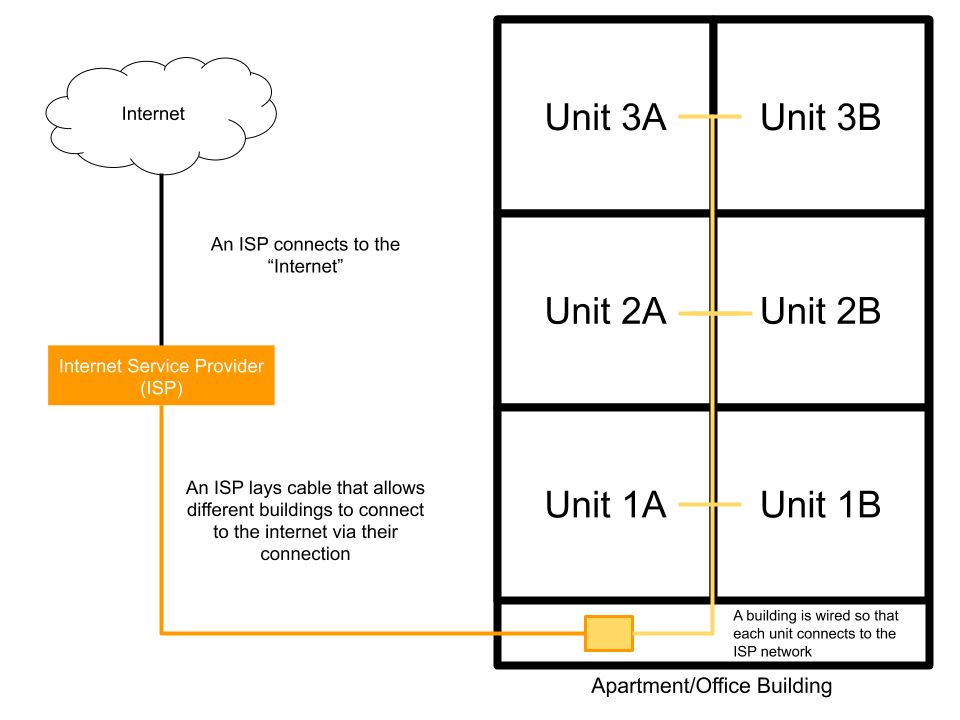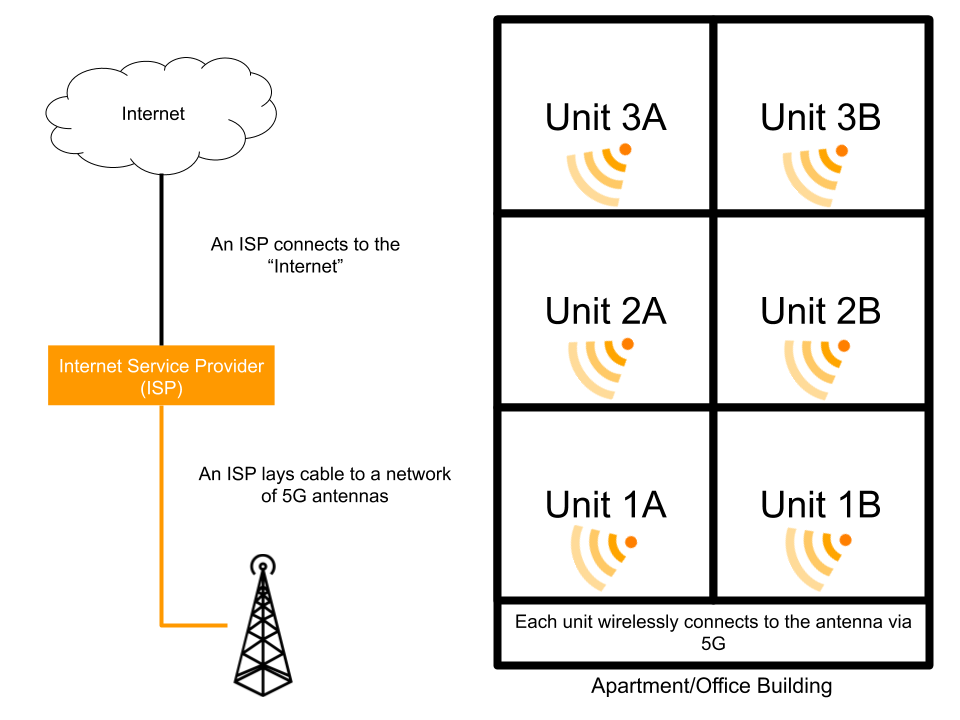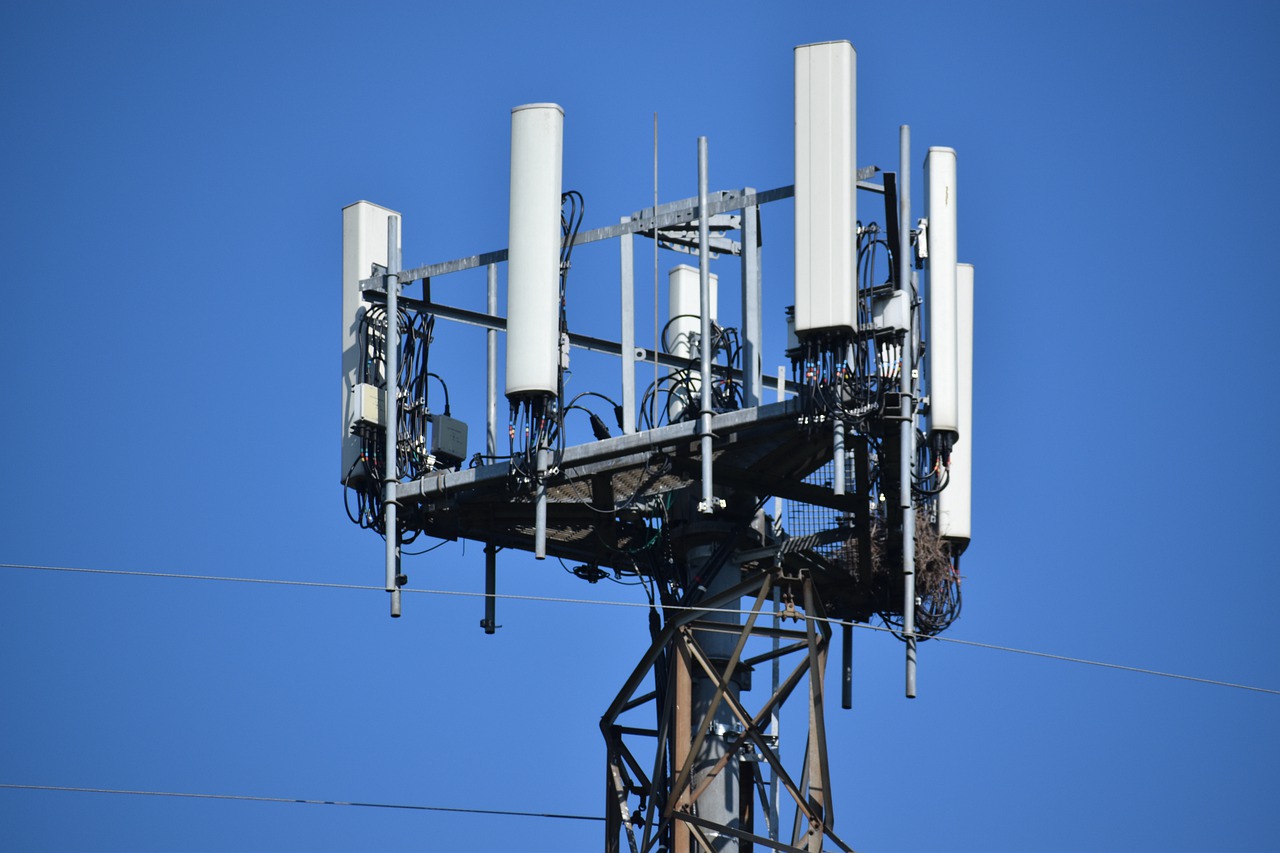The Age of 5G

A friend of mine recently called asking for my help with something. Their long time roommate was moving out and they needed advice choosing a new home internet plan (their current contract was under their roommate’s name). My friend was unsure on what different options they had and knowing me to be a huge nerd for this type of thing, decided to seek my opinion on the matter. I knew that my friend was less than happy with their current internet plan’s performance, so I suggested that this was the perfect opportunity for an upgrade. Promising to help them through the process of sifting and picking through the different options and helping out with setting it up.
But unfortunately for my friend, after a bit of canvassing for different options we found out that their building was far too old, and thus did not have any proper fiber-optic or broadband wiring for conventional home internet plans. However, one telecommunications company that we canvassed suggested an alternative to “wired connections”. They suggested that we consider a 5G internet plan.
What is 5G?
5G has been a headliner topic lately. From promises of revolutionizing the technology industry to debunked conspiracy theories that it caused COVID-19 , there is no shortage of news about this new technology. In technical terms, 5G is the fifth generation standard in cellular broadband communication technology utilizing two sets of frequency bands (450 MHz to 6 GHz and 24.25 GHz to 52.6 GHz). Using these higher frequency bands 5G is able to provide vastly faster internet upload and download speeds compared to 4G (the previous iteration), with the potential to achieve theoretical maximums of 20 Gbps (Gigabits per second) download and 10 Gbps upload.
It is because of that higher network performance that 5G is seen to be revolutionary. The promise of a high-speed low-latency “Internet of Things” (IoT) network over a large geographical area could have a multitude of different impactful applications. Not to mention the possible implications on projects such as self-driving cars.
But for the average consumer, 5G also holds the promise of another revolution. Upturning the status quo on home internet plans.
5G at home
Internet access is a very infrastructure-heavy endeavor. For a building to have access to the internet, traditional methods call for an internet service provider (ISP) to lay cable to connect that building to their network. They would then have to wire up the entire building so that each unit would have their own dedicated port to connect to that network. In this traditional method cables would preferably be laid down in an unobtrusive way. This means they would either need to be kept underground and built into a building’s walls. This all culminates into a very labor and cost-intensive process.

5G has the potential to upset that paradigm. Since 5G data speeds are comparable to a wired fiber-optic internet connection, ISPs have realized that rather than invest in costly projects to connect individual buildings and units to the internet through wired-cables, they can instead promote 5G as a viable alternative. In a 5G arrangement the only infrastructure an ISP needs to consider is setting up the various antennas to broadcast a 5G signal. They would then sell 5G routers to users, which would connect to the network through the wireless cellular signal (instead of wires).

Home internet provided through a cellular network wasn’t a concept that was introduced by 5G, but only made more viable because of it. Prior to 5G the closest equivalent consumers had access to were the pocket WiFi “eggs” that could be used to “hotspot” an internet connection. These would use the 4G broadband connection and would only have a real-world connection speed of up to 100 Mbps . The faster connection speeds offered by 5G has now made home internet provided by a cellular network more viable.

Challenges for 5G
The roll-out of 5G will not be without its own challenges. Since 5G employs a higher frequency band their effective range is much shorter compared to 4G. Which means that telecommunications companies will have to invest in building more 5G antennas to provide adequate coverage over a wider geographic area.

Full 5G coverage in Hong Kong still leaves a lot to be desired. nperf.com tracks 5G network availability within the city, and unless you live in a high-traffic location, chances are that you still do not have full 5G coverage and thus can not enjoy full 5G speeds.

This limited geographic coverage is one of the major obstacles that prevent 5G from seeing widespread adoption. But this will hopefully be something that will soon be rectified as companies invest more in building out their 5G networks.
Another major challenge that stands in the way of 5G adoption is its limited track record. While on paper 5G looks like a very attractive value proposition, it will need to stand up to real-world scrutiny and use cases before it can be accepted into the mainstream. It will need to prove that it can indeed deliver promised speeds and reliability over traditional wired cabling. For niche cases like my friend whose building is too old to support such traditional methods, 5G is a viable alternative to adopt now. But for individuals like myself who host a homelab that heavily relies on a stable internet connection, the 5G experience still requires additional study.



